YOUR GUIDE TO ECOMMERCE FULFILMENT



Fro ther’s Day, sales events like Summer sales and Back to School, through to events that come around every few years like the World Cup or Olympics, planning for
Peak is just around the corner and it's now time to make sure you're prepared for the increase in orders and deliveries. Make sure you're ready by making your business as automated and simple behind the scenes as

Peak is just around the corner and it's now time to make sure you're prepared for the increase in orders and deliveries. Make sure you're ready by making your business as automated and simple behind the scenes as orders so that you can spend your time on what matters most and make sure you have a successful peak season.
orders so that you can spend your time on what matters most and make sure you have a successful peak season.

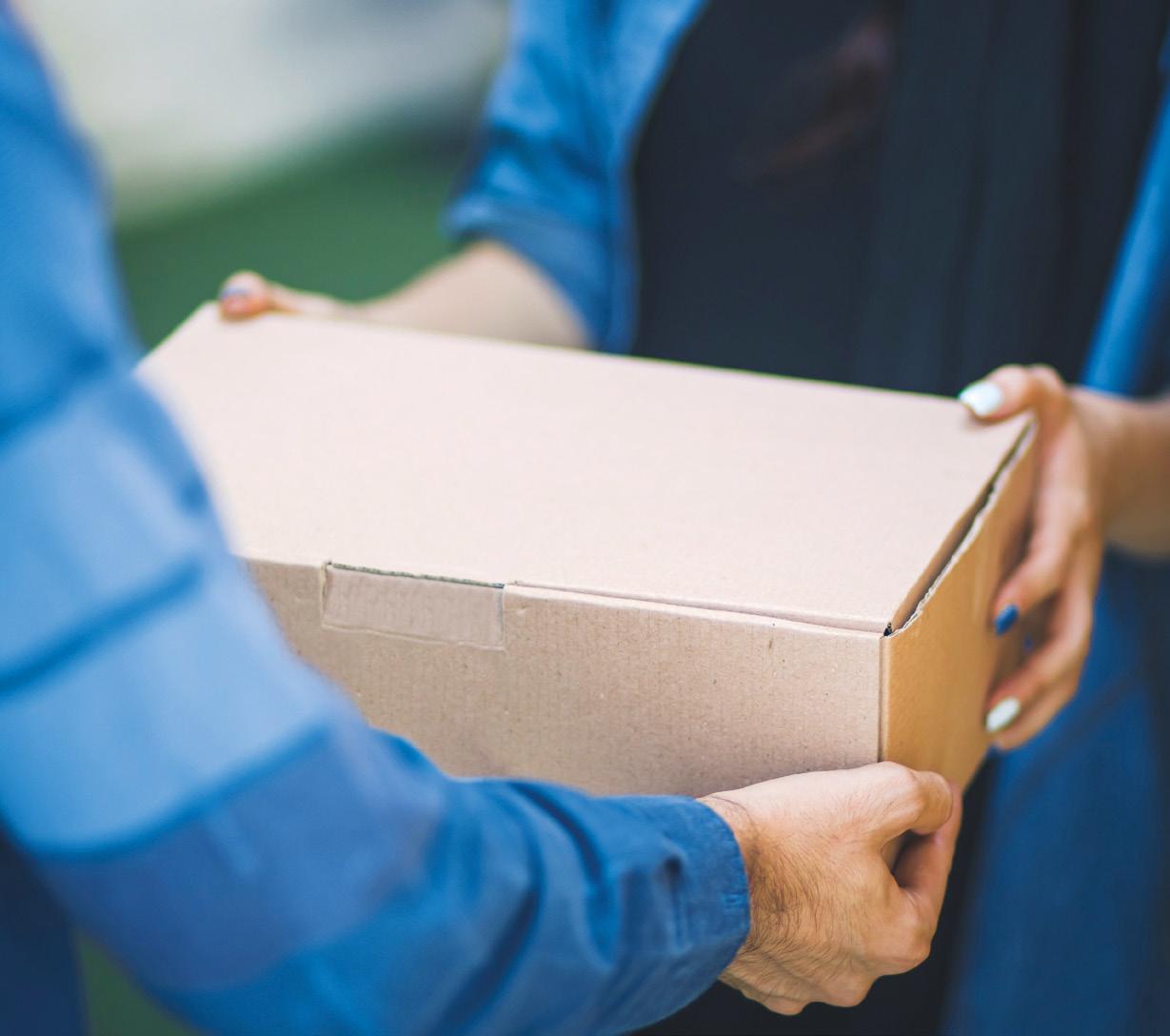


How to design the perfect last-mile delivery service
Connect the order, shipping and delivery process to improve customer experience
Return to sender: coping with returns in peak season
Hidden fees in ecommerce shipping and what you can do about it
The benefits of parcel lockers
3 Ways to simplify fulfilment during peak
5 Types of sustainable retail packaging
What is the future of autonomous delivery?
Shipping subscriptions: the rise of delivery as a service
Holly brings a wealth of experience in both print and digital publishing. As Modern Retail’s Content Editor, Holly is passionate about helping independent retailers to thrive in today’s ever-changing market.
Managing Editor
Rob Gamage - rob@modernretail.co.uk
Content Editor
Holly Worthington - holly@modernretail.co.uk

Business Development Manager
Emma Mjekiqi - emma@modernretail.co.uk
Many thanks to all those who provided editorial content or images, helping us to compile what we hope is a useful and informative read! Please send any comments or suggestions to rob@modernretail.co.uk.
Modern Retail is published by Considered Digital Ltd (Registered Company Number 12684643).
Registered office address: 39 The Metro Centre, Tolpits Lane, Watford, Hertfordshire, United Kingdom, WD18 9SB.
These steps will help you to determine the perfect last-mile delivery service for your business.
Holly Worthington, Content Editor, Modern Retail
Last-mile is the final part of every order’s journey. It’s the process of getting a package from the closest warehouse or hub and delivering it directly to the customer.
While it was once about delivering each parcel as quickly as possible, there are now many other factors to take into account, including environmental impact and costs.
For retailers to design the perfect lastmile delivery service, they must now understand their customers’ expectations and align this with realistic delivery options.
Here are some of the greatest considerations that bring challenges to retailers’ last-mile fulfilment operations:
• Lowering carbon emissions
• Geographical coverage
• Reducing costs
• Improving productivity
• Introducing technology
• Market inflation
• Changing consumer habits
These steps will help you to determine the perfect last-mile delivery service for your business.
There is no point in assuming that every customer wants 30-minute delivery and spending a fortune to make this possible. Instead, begin by understanding how quickly you would need to deliver for your customers to see it as ‘fast’.
It’s not all about speed. It’s a great idea to carry out market research, so you can gain
a more in-depth understanding of your customers’ priorities. For example, if 80% of them would be willing to wait longer for a more environmentally-friendly delivery service, this is something you would want to know.
There are countless options for last-mile delivery available, ranging from small delivery companies, to delivery robots and electric vans. Consider how beneficial each could be for your business and don’t be afraid to explore combining multiple options.
With fulfilment, you may have to design different last-mile delivery services. For example, in Milton Keynes, Co-Op has been able to use Starship delivery robots for last-mile delivery. In the more remote areas of Scotland, this would not be doable, or efficient… however it doesn’t mean it is not a good idea in Milton Keynes. Instead, you should understand the best approaches in each area where you have customers, creating a combination of these to meet demand and expectations.
When working out the best approach for last-mile delivery, ask yourself these questions:
• What is the customer demand in each area you deliver to?
• Do you need a different last-mile solution for different areas? (E.g. cities, towns, villages)
• What do shoppers consider to be ‘quick’?
• What are the benefits of each approach?
• How much does each approach cost?




Despite the challenges that retailers are currently facing, how can retailers continue to grow? One critical element of futureproofing an online retail business is to focus on customer experience.
Buyers have higher expectations of the quality of their experience from checkout to front door. Ensuring that the experience is positive is of the utmost importance. Post-purchase experience, or everything that happens after a customer clicks pay, is proving to be what online retailers are judged on.
However, the ecommerce delivery experience can be difficult to get right on a consistent basis. The best way to put in place a scalable process is to remove friction by connecting all aspects of the order, shipping and delivery process.

Integrating your ecommerce store, logistics, and customer systems via the cloud can help eliminate any gaps. Through the use of an API that feeds real-time tracking information into a single integrated system, retailers can be proactive in providing up to date shipping updates to their customers. By plugging into an existing API, connectivity with multiple carriers is maintained by the platform provider. This allows developers to focus on more strategic tasks. Real-time tracking information means that when ‘where is my order?’ queries do come through, customer service teams can provide quick and accurate support.
From a retailer’s perspective, when it comes to delivering the goods to the customer, having flexible and personalised delivery options at checkout such as expedited shipping, click and collect, and
collection point pickup, converts more buyers, particularly in the current market as timed delivery, personalised options become more and more popular. In fact, we know that 86% of UK shoppers prefer when retailers offer a variety of delivery options. Therefore retailers must increase and ultimately integrate carrier selection in order to be able to offer different kinds of delivery options in a cohesive and efficient way.
A delivery management platform enables retailers to manage all carrier data easily, in one place. This has a profound impact on the overall customer experience but also streamlines order tracking for the retailer. Manual tasks such as labelling can be automated, with one template working for multiple carriers. This ensures accuracy and decreases failed deliveries. These systems can also look at a customer’s preferred
After all, it’s all about getting parcels into the hands of your customers as efficiently, affordably, and seamlessly as possible.
and personalised delivery options and can pair the appropriate carrier to the order, ensuring the parcel arrives on time.

Connecting multiple systems through a delivery management platform also offers retailers precise, real-time shipping data, so support teams have a complete toolbox to answer any and all queries quickly and efficiently. Retailers can then take a more proactive approach to deliveries by providing tracking updates on a continuous basis, long before the customer feels the need to reach out for support.
For peak season, a platform that automates carrier selection and integrates ecommerce shopping sites and customer systems, can ensure that a surge in orders is managed better. Above all, it means your customers are informed, happy, and far more likely to return.

With integrated systems, you have access to information on online orders, shipping, and delivery when you need it. With delivery speed, cost, and reliability metrics to hand, your whole operation will benefit, as you identify areas for improvement and take positive action to improve the customer experience.
After all, it’s all about getting parcels into the hands of your customers as efficiently, affordably, and seamlessly as possible.
Contributor:Fergal O’Carroll, CRO at Scurri
“The best way to put in place a scalable process is to remove friction by connecting all aspects of the order, shipping and delivery process.”
eCommerce businesses both in the UK and the EU have been perplexed by the challenges of moving goods in and out of the UK. Although Brexit was over two years ago, it is still adding challenges for businesses with international customers. UKP Worldwide (UKPW) have been in the market of international shipping for over 20 years and in this time the landscape/ market has changed considerably, however, it’s in the last two years that we’ve noticed our customers feeling most confused.
There are so many options available for importing and exporting goods depending on the journey required, if time is of the essence, then air is by far the quickest way to travel but is often costly, whereas sea may be a cheaper option, especially for copious quantities, but is also slowest. If goods are moving within the EU/UK then road is often the preferred choice, it’s fairly quick and considerably cheaper than air.

With the numerous forms of transport come the various services available, as well as the value and the type of goods to take into consideration. Do you know what options are available for low-value goods being imported into the UK from
the EU or exported from the UK to the EU? If you are importing or exporting lowvalue goods, you could declare more than one shipment in a single declaration, not only reducing time but also costs.
With this type of service, there is no limit on the number of items that can be cleared in one declaration. Instead, importers can clear unlimited items up to the value of £135 per consignee, and exporters can clear goods up to the value of €150 per consignee without having to pay duty on the goods. This can save eCommerce businesses thousands of pounds in duty.
Our customer in Germany is one of the largest transport platforms in the EU for eCommerce business and has been in the market of transporting goods internationally for several years, despite their knowledge to ensure they continued to provide the best service, they chose to have a partner on the ground in the importing country to minimise the hurdles that may arise.
Not all importers have the capacity to regularly clear thousands of eCommerce parcels, however, this is where we, UKPW can help. We have many customs
authorisations including BIRDS, making us one of the few companies in the UK to be fully BIRDS authorised and AEO accredited to go with our very own ETSF (External Temporary Storage Facility), as well as vast experience in IOSS processes allowing us to handle imports and exports from the start to finish, whether clearing at the border or our ETSF. Combine this with the flexibility of offering our customers a range of international ecommerce solutions for shipping both high-value and low-value goods we hope you’ll want to partner with UKPW.
Contributor: UKP Worldwide


“It is no secret that returns are one of the main reasons for consumers to contact customer support desks, so it is essential that retailers prioritise the fulfilment and management of this effectively.”
Contributor: Andrew Tavener, Head of Marketing, Descartes
Retailers must make changes to their operations in order to deal with peak demand, process returns effectively and continue to provide their customers with a positive experience.
Peak season brings an increase in sales and revenue for many retailers, and a significant proportion of these are expected to be online, dramatically increasing the number of deliveries needing to be fulfilled. However, there is an inevitable expectation that many orders will be returned to the warehouse. In January 2021, Royal Mail saw returns surge by 63% on “Takeback Monday” compared to the normal number of returned parcels per day in December – a theme that occurs annually.
Returns can cost UK retailers a massive £60bn a year, with a third of this generated purely from online shopping, particularly amongst the younger demographic, with a huge 60% of 16-34-year-olds having returned an online order within the last year. It is no secret that returns are one of the main reasons for consumers to contact customer support desks, so it is essential that retailers prioritise the fulfilment and management of this effectively to retain customers and ensure high levels of satisfaction.
With the shortage of HGV drivers plaguing the industry, however, managing returns could be even more
of a challenge. So, how do retailers and logistics companies optimise their use of existing resources to ensure this is executed in a cost-effective and timely manner?
84% of shoppers claim they would reject a retailer following a poor returns experience, so it is clear that a frictionless and quick returns process is vital. Effectively communicating with customers throughout can produce an increase in customer confidence and trust. However, in order for retailers to provide an exemplary returns process in the midst of the current challenges, they must leverage real-time visibility of the supply chain.
With the use of scalable and advanced route planning and home delivery optimisation software, supply chain performance can be transformed and retailers can maximise the utilisation and efficiency of existing resources, speeding up returns collection and transportation. Route planning solutions continually optimise demand and collections capacity and resources to improve service and productivity whilst reducing costs, streamlining the end-toend handling of any returns. Through electronic proof of delivery and a realtime view of assets, customers can track their returns and feel confident and satisfied with the retailer.
Combining this with a warehouse management system (WMS), retailers
are able to unlock flexibility and agility gains. An effective WMS can provide the ability to inform the shopper the moment the returned item has been received, building confidence and rapport, as well as logging it into the inventory again quickly to allow it to be approved for sale faster. These processes can speed up returns handling by 49%, giving a satisfactory experience for the customer and an updated inventory for the retailer with minimal delay.
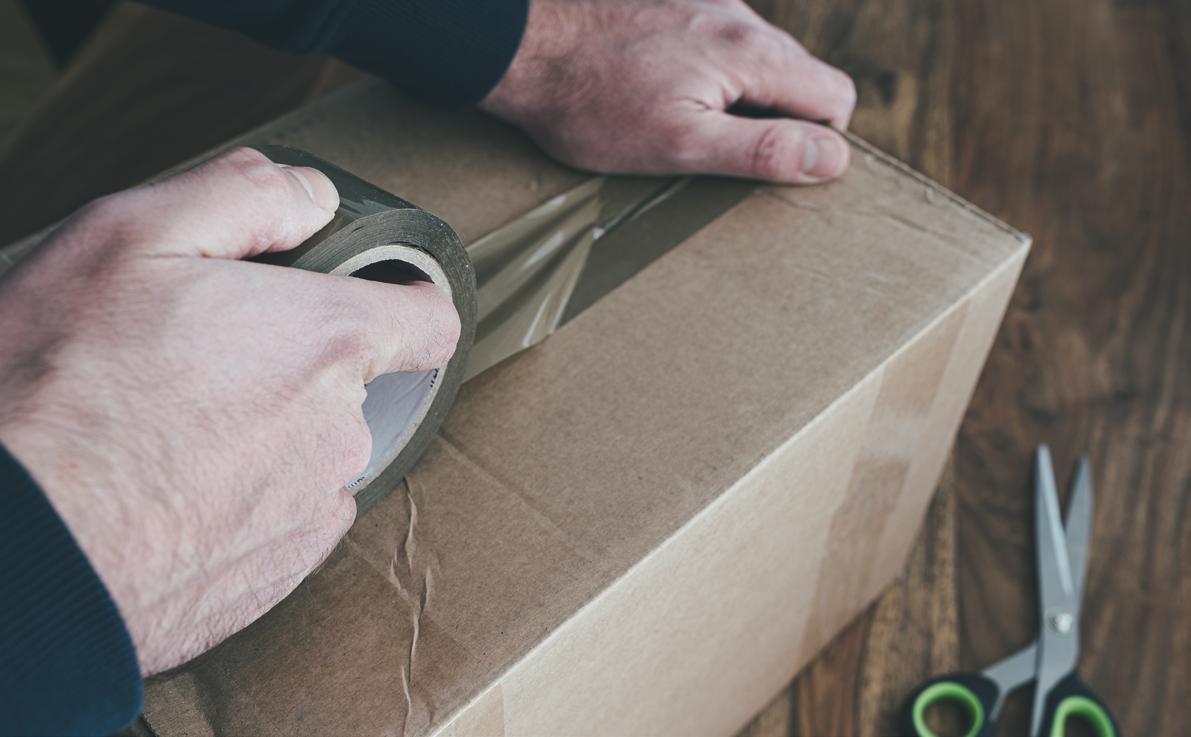
Increasingly, UK shoppers are taking an interest in the environmental impact of their purchases. According to research from Descartes in Autumn 2021, a huge 60% consider the impact on the environment of online orders. Adding to this pressure on retailers, there have been an increased number of discussions
around emissions following the COP26 summit and an upcoming ban on the sale of new petrol and diesel vehicles.
It is crucial that retailers consider this when offering both deliveries and collections. Indisputably, returns have a negative effect on the environment and create needless damaging emissions, yet the smallest adjustments to operations can have a huge positive impact on how eco-friendly operations are. Many retailers and delivery companies have invested in purchasing Electric Vehicles (EVs), which can mitigate the growing costs associated with the UK’s Clear Air Zones, but it is also necessary to ensure that intelligent route management is used so the right vehicles can be deployed to match capacity with demand in real-time. Continuous optimisation of routes can improve the efficiency of the fleet and lead to a 5-25% reduction in fuel consumption.
Using intelligent solutions can support retailers to ensure they are offering a good customer experience throughout the peak season and fulfilling returns in an effective and timely manner into the new year. The difference between a smooth and seamless experience and a negative one is the difference between gaining and retaining customers or losing out to competitors. Maximising the efficiency and productivity of operations with existing internal resources through automation and optimisation is vital due to the ongoing shortages and simultaneously minimising the environmental impact will improve customer perception and increase sales.


Competitive pricing is crucial for ecommerce success; if you can beat your competitors on price, you’ve got a leg up at the outset. But you must be careful not to cut your margins so thin that you slice off all your profit. So, it’s critical to understand the true costs of getting your products from the factory to your customers, including transport, fulfilment, and shipping.
Surprise shipping charges are a frequent source of sticker shock, particularly for retailers new to online sales and fulfilment. Here are four of the more common hidden fees in ecommerce shipping and how to reduce or eliminate them.
If you sell oversized merchandise, your parcels could be subject to volumetric charging (also known as dimensional weight). Volumetric charges are shipping fees calculated by size rather than weight,

and delivery services will typically charge you the greater of actual or volumetric weight.
Let’s imagine you’re shipping an order with an actual weight of 2 kg in a box with dimensions of 50cm x 50cm x 20cm. To calculate the volumetric weight of the package if shipped with Parcelforce, multiply the dimensions and then divide by 5000, thus:
50cm x 50cm x 20cm/5000 = 10kg
If you ship this order via Parcelforce, you’ll pay to ship 10kg, not 2kg. FedEx and DHL also use a coefficient of 5000 for packages measured in centimetres.
Most carriers have volumetric weight calculators or publish the calculations you need. To avoid undercharging your customers for shipping, or failing to build enough into your pricing to cover free shipping, you need to know which
Surprise shipping charges are a frequent source of sticker shock, particularly for retailers new to online sales and fulfilment.
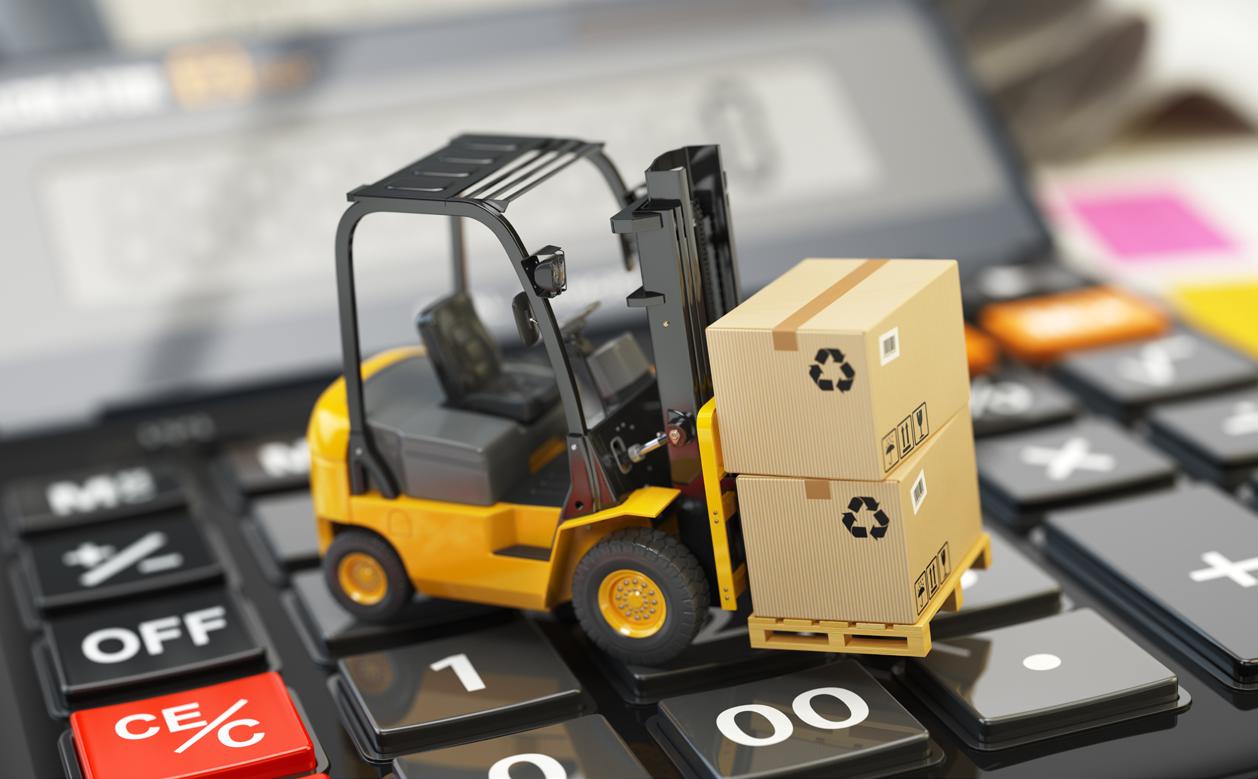
AND WHAT YOU CAN DO ABOUT IT
“Here are four of the more common hidden fees in ecommerce shipping and how to reduce or eliminate them.”Contributor:
Jake Rheude, Vice President of Marketing Red Stag Fulfillment
products will be subject to volumetric charging.
In some cases, there’s no way to escape volumetric weight charges. But, if your package is just a smidge too big for the weight, work with your factory and fulfilment company to see if you can rework the packaging to avoid volumetric charging.
Shipping companies add surcharges for various circumstances, including peak ecommerce season, which puts a high demand on delivery services.
Rising fuel prices have led shippers like FedEx to apply fuel surcharges that change frequently. You can’t skip these surcharges, but by keeping an eye on them and adjusting the shipping charges in your shopping cart accordingly, you can keep them from ruining your profitability.
Other surcharges, however, are avoidable. For example, your packing and shipping method for lithium batteries can make the difference between a 4.00 GBP DHL surcharge or no extra charge. Lithium batteries shipped in a box with other equipment are subject to the surcharge. However, if the battery is shipped installed, there’s no extra charge to send it. So, suppose you sell electric bikes powered by lithium batteries. If you include the battery pack in the box with the bike, that’s an extra 4.00 GBP; if you install the battery on the bicycle before you ship it, you save the surcharge and reduce your shipping fees. Plus, your customer will have less assembly when they receive their new bike.
Shippers add surcharges to packages transporting materials that are considered hazardous, parcels that need to be shipped with dry ice, and other special handling requirements. Check the classification of your products and make sure your shipper doesn’t misclassify products as hazardous and apply the surcharge in error (it happens).
When calculating your shipping costs, you may not include the insurance cost. If your product range includes high-value items, additional insurance is a must.
Parcel tracking is very sophisticated, and carriers don’t lose many packages today, so you might figure that the replacement cost for a few lost orders is less than the fees to add insurance to every package. That’s a valid and reasonable choice; just make sure you base it on data, not assumptions or hunches. And recalculate the costs of insuring vs. not insuring parcels every half year or so to see if the balance has tilted in one direction or another.
Returns aren’t technically a hidden shipping fee, but the cost of return shipping can be a hard-to-quantify variable for ecommerce companies. And the cost of returns includes goods that can’t be resold and replacement packaging.
Some percentage of returns is unavoidable in online retail, and you must build that cost into your cost of goods sold. But you can take steps to reduce your return rate.
Preventing returns begins in the fulfilment warehouse. A logistics company with robust checks at every step of the pick and pack process is less likely to make a fulfilment error that could lead to a return.
One of the most common picking errors is getting the wrong quantity. For instance, if an order includes two of one SKU, the picker can easily miss the amount and pull a single item. Fulfilment centres can use bar codes, RFID chips, and scanners to alert pickers when the items scanned into the bin don’t match the corresponding pick list. The warehouse management system can halt picking until the worker corrects the error.
Another common reason for returns is improper packaging. A heavy item shipped
in a box that’s not strong enough is more liable to be damaged during transport. Using the proper packing to fit the order is a simple way to head off returns due to damage. Choose a fulfilment partner that understands how to handle and ship products of similar size, weight, and other characteristics to yours. You’ll have fewer returns and protect your operations from that hidden shipping fee.
An excellent 3PL is your best ally in reducing hidden shipping fees. Leverage your fulfilment centre’s experienced staff to share the expertise they’ve gained working with hundreds of ecommerce companies.
While constant innovation generates a stream of new intralogistics solutions, ‘classic’ pallet racking remains the most commonly used storage system. Its relatively low investment costs and flexibility – whether through changing rack configuration, retrofitting special purpose modules or adding extra bays –have made it an indispensable framework for storage and order picking systems.

Of course, many operations use pallet racking as the basis for straightforward storage and retrieval of full pallets, either to fulfil customer orders or as a bulk store for replenishment. But the trend toward shorter product life cycles is increasing SKU numbers. The drive to minimise stock levels for each SKU and improve picking process efficiency to speed up order fulfilment, combined with demands for Just-in-Time delivery and online retail, is
generating a greater need for small parts storage.

This is where the adaptability of pallet racking comes to the fore because small parts picking can be easily integrated within pallet racks. One option is to create small parts pick locations on the reachable ground level, with upper storage levels serving as a buffer store for replenishment. Small parts storage
Contributor: BITOcontainers will help to store and organise small goods and C-parts – making them available for quick and easy picking.
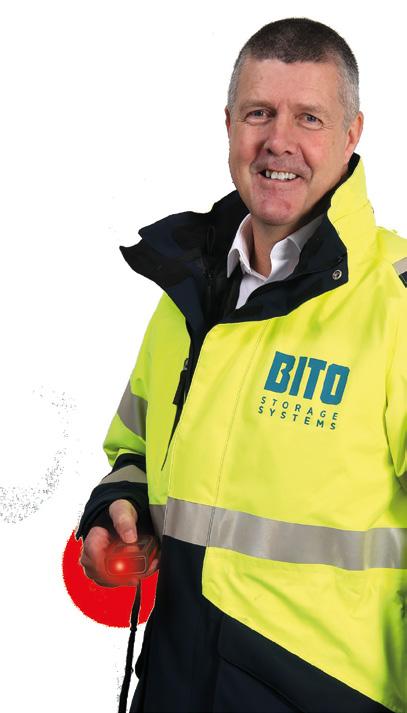
Flow shelves can be easily installed into pallet racking to increase the number of pick locations and volume of SKUs located on the ground level pick face. Goods are easily accessible from the front of the racking – the rollers on the flow shelves allow bins and containers containing small items to be picked roll smoothly to the
front of the shelf – which makes picking easy. A full container of parts will roll to the operator each time the empty one at the front removed.
Inclined supply shelving within a pallet racking bay will make items clearly visible for picking. Cardboard cartons or plastic bins can be used, though the later option enables preparation in advance at the goods-in area by filling the plastic bin with the items to be picked.

Parcel lockers are the new big thing and more and more carriers are joining forces with retailers to offer consumers the opportunity to pick up their parcels at a place, and time, that is convenient.
The question now is, will parcel lockers win the hearts and minds of consumers? And what are the advantages and disadvantages of this type of delivery?

Consumers crave convenience and are well and truly embracing self-service. The selfservice scans at supermarkets and fashion stores have already proven to be a hit, as shoppers literally have the power in their own hands.
And it’s a win-win as delivery drivers don’t have to show up at an empty house!
Evri is a good example of a carrier that successfully implemented parcel lockers as a shipping method. They have over 3,000 lockers across the UK, open 24/7, meaning consumers can always find a parcel locker locally to them, at any time of day or night.
Not only do parcel lockers give consumers the convenience and flexibility to arrange the time and location of their delivery, but they also contribute to more sustainable and efficient delivery. Bonus.
The same applies to the delivery and return of orders. Consumers aren’t always able to stay at home to take delivery of an item, nor do they have the time to queue up to drop off a return, which is why they are increasingly opting for parcel lockers as their preferred delivery destination.
Not only do parcel lockers give consumers the convenience and flexibility to arrange the time and location of their delivery, but they also contribute to more sustainable and efficient delivery. Bonus.
71% of consumers claim flexible delivery, such as same-day delivery or delivery to a pick-up point, is key for them when placing an online order. Consumers like to decide where, when and how to accept an order.
Parcel lockers seem to be the perfect answer for that. After all, parcel lockers always have a 100% delivery guarantee allowing consumers to pick up a parcel whenever it suits them.
Another example is InPost, who have teamed up with the UK’s top retailers and brands to offer collection and returns via parcel lockers. An interesting way to handle counters more efficiently, without creating long queues of people coming to send or collect orders. Not to mention the mountains of packages often piled up in the warehouse.
Amidst increasing fuel prices, high inflation, low purchasing power and staff shortages at carriers and warehouses, considering your own clever shipping strategy can offer consumers the flexibility they desire.
In fact, by offering a mix of shipping options in your checkout, you can offer consumers the flexibility they desire. Delivery to a pickup point or locker should definitely be part of the mix, as research we recently carried out amongst 1,000 consumers shows almost half (47%) would like to have the option to choose delivery to a pick-up point.
“Research shows almost half (47%) would like to have the option to choose delivery to a pick-up point.”
Including parcel lockers as an option in the checkout has plenty of benefits:
It is probably pretty obvious: one parcel is already waiting to be returned and the next one is already arriving. The advantage of a parcel locker is that the returning and collecting of parcels can be combined in one trip. Save yourself and the delivery driver an unnecessary trip and logistical costs in the last few miles.
The high fuel prices have not escaped anyone’s attention. It is, therefore, more unfavourable than ever before – not only just for the planet but also for your purse –to have a delivery van stopped at each front door to deliver a parcel. Those carriers who want to make the last mile even more sustainable often work with fossil-free and renewable fuels to even justify the delivery to parcel lockers.
Carriers usually don’t deliver any parcels on Sundays or in the evenings. This is quite inconvenient for most working consumers with a 9-to-5 job. Having your products delivered to a parcel locker is the perfect solution, as the lockers are often located at supermarkets or stores with flexible opening hours. Sometimes, parcel lockers are even accessible 24/7 – offering consumers even more convenience.
Take the weight off delivery staff during peak periods, by shipping parcels to a locker instead of choosing home delivery. Depending on the parcel size, locker walls can accommodate 25 to 250 parcels, allowing one delivery driver to deliver dozens or hundreds of orders in just one stop. Efficiency to the utmost degree!
Besides all the advantages, parcel lockers do still come with a few challenges. Due to the complicated technological system behind them, installing parcel lockers is still quite expensive and can therefore only succeed if they are actively used.
If consumers wait two or three days before collecting their order, the parcel locker is ‘unnecessarily’ full. The best scenario is being able to use each locker several times a day, meaning that consumers would have to come and collect their parcels within a few hours after the delivery. Is that really what consumers want? Only time will tell.

All in all, parcel lockers can be an interesting solution to reduce the number of delivery vans in residential areas and offer consumers the flexibility they desire.
On top of that, shipping to lockers is more sustainable in terms of the last mile and can be a good way to unburden carriers during the peak period.
However, the rise of parcel lockers will only succeed if consumers are willing to use them and regularly pick up their orders actively. As retailers, being able to identify consumer preferences and find a way to offer a realistic solution that utilises parcel lockers could reduce pressure on the fulfilment side of the business.
Contributor: Sabi Tolou, CCO & Co-founder, Sendcloud



















































































The best way to simplify fulfilment during peak is to assess whether your existing operations are meeting your requirements.
As the busiest time of year continues for retailers, it has never been more important to capitalise on increased demand. Now is the perfect time to ensure your strategy around everything involving stock, logistics and marketing is in place, ready to deliver in line with shoppers’ expectations.
These 3 top tips will help you to avoid some of the most common mistakes and pitfalls when it comes to stock and fulfilment.
Two common issues include not having enough stock available to accommodate sales, and not preparing stock ahead of time.
It’s all well and good watching the sales fly in throughout Christmas and January sales, but what happens afterwards? Without enough planning, you may find yourself running out of time, delivering products late, sending incorrect items and damaging your reputation. This causes retailers around the world to lose an average of $1.75 trillion per year due to mismanaged inventory.
Fulfilling multiple orders requires knowledge of precisely how much stock you have and where it is, before implementing sound processes to quickly and accurately ship to your customer. Successful multichannel logistics involves complex, dynamic, tech-forward solutions to inventory management. To avoid this problem, ensure you have your stock ready for distribution ahead of time, so that when orders come in, the fulfilment process can be as quick and streamlined as possible.
Digital technology and analytics bring heightened automation, merchandise visibility, and business intelligence to supply chain logistics, simplifying this process while reducing the likelihood of errors.
One of the most critical parts of any fulfilment process is the preparation of outgoing stock, making sure it aligns with delivery timescales, such as next-day delivery.
Once an order has been placed, products need picking and packing into boxes, shipping labels need to be printed and then need attaching, with the product ready to begin its journey. This may sound relatively simple, however, it can get surprisingly tricky on mass. As such, automating these processes wherever possible can save time and improve accuracy.
For many retailers, introducing a 3PL to help take care of fulfilment can be beneficial, particularly during peak.
While a 3PL does require additional budget, this cost can often be recovered through the lack of mistakes, the enhanced efficiency and the number of returning customers as a result.
Having a greater number of returning customers due to having an error-free, fast fulfilment service can be worth significant sums of money over the years, boosting reputation and customer loyalty at the same time.
Fulfilment doesn’t have to be complicated. Many people grow a retail business and try to continue using the same processes, without realising that they have outgrown your operations.
The best way to simplify fulfilment during peak is to assess whether your existing operations are meeting your requirements and looking for alternatives that could be beneficial for your business long-term.
Contributor: Holly Worthington, Content Editor, Modern Retail

Eco-consumer rates are increasing globally and high-emission companies are going out of business as sustainable customers influence the market. The great news is that retailers can remain competitive in the industry by minimising their packaging waste.
A significant quantity of retail packaging derives from plastic. Conventional material manufacturing practices produce carbon dioxide emissions, with plastic production in 2019 creating nearly 850 million metric tons of greenhouse gas pollution.
Retail businesses can reduce their impact on the environment by investing in sustainable packaging.
Here are five types of green containers that retailers and manufacturers can use, to shrink their carbon footprints.
Fiber packaging can be a suitable material, helping to hold products in place while protecting them.
By making this switch, you can increase the security and sustainability of shipped items. Manufacturers develop the fibers from molded pulp, making them 100% biodegradable and recyclable. It can fit around the top and base of items being shipped, preventing pressure-related damage.
2. Sustainable paper containers
Target is an example of a retailer that increased its green packaging goals for
2022 using sustainably sourced paper. The company uses paper to produce bags and cardboard boxes. They plan on efficiently managing their material vendors, ensuring they source their paper from consciously maintained forests.

3. Eco-friendly package labels
Other retailers like Sephora and RiteAid plan on increasing their packages’ sustainability by enhancing transparency. Companies will use “Proud Planet,” “Free From,” and “Clean Beauty” labels, helping consumers make conscious decisions. The new container labels may push other manufacturers to increase their environmental conservation practices.
4. Biodegradable bags and packing peanuts
Many companies are reducing container
Retailers can confidently invest in sustainable packaging materials knowing Generation Z and Millennial consumers are willing to pay more for consciously produced products.
waste using natural biodegradable polymers. The packaging material derives from agricultural sources and biomass. Some products come from plant proteins, making them 100% biodegradable. This is a great material to create sustainable bags and packing peanuts from, which can be used throughout the packaging, fulfilment and shipping process.
A new sustainable packaging material available to retailers comes from seaweed. The containers are biodegradable and edible, eliminating landfill pollution and microplastic waste. Seaweed is an abundant, renewable resource.
whether the fulfilment provider incurs the cost for the shipping on their own mistakes, as well as retrieval of incorrect items.
Using aquatic vegetation to manufacture packages can reduce society’s reliance on oil. It also supports a closed-loop, circular
6. Will I have a dedicated account manager?

Find out wh ether you will have a specific account manager or team that is responsible for overseeing your fulfilment operations.
Dedicated account managers are best suited to those that require regular communication or somebody that can act on their behalf within the warehouse. Having a team that is responsible for your fulfilment can work well in scenarios where fulfilment requirements are not particularly complex.
7. What are your min imum and maximum order requirements?
As k what each fulfilment company’s minimum and maximum order
economy. When companies use consciously produced containers, they can significantly shrink their carbon footprints.
Retailers can confidently invest in sustainable packaging materials knowing Generation Z and Millennial consumers are willing to pay more for consciously produced products. This can also help to boost long-term business, offsetting the initial cost of switching to new types of packaging.

quantities are. Ideally, there will be scope to upgrade or downsize your operations, should demand change. The perfect fulfilment partner will be able to grow alongside your business, increasing the order size as required.
8. Will you insure my stock?
To prot ect your inventory, your choice of fulfilment partner should have insurance coverage for events such as flood, fire, theft and accidental damage within their facility. Find out which coverage they have, as well as the claims procedures, so you can have peace of mind.
9. Can you give a service guarantee?
Service guarantees are relatively common in the fulfilment industry. Asking for one of these can give reassurance of delivery shipment times, as well as what happens if these expectations are not adhered to.
10. Can you help with customer service?
To strea mline customer service and deal with ‘Where is my order?’ enquiries, it is important to know whether or not your fulfilment partner can help with customer service. If they do not, you need close communication, so you can update customers yourself. If they do offer customer service, it is key to make sure they can align with your brand values, handling complaints in a way that you are happy with.
If this is not discussed, it can lead to significant reputational damage, as customers are left feeling ignored.
By asking these 10 questions of any potential fulfilment partner, you can make sure they are able to offer the level of service that you require.
Contributor:Devin Partida, Editor-in-Chief, ReHack.com
“Retail businesses can reduce their impact on the environment by investing in sustainable packaging”
“By asking these 10 questions of any potential fulfilment partner, you can make sure they are able to offer the level of service that you require.”
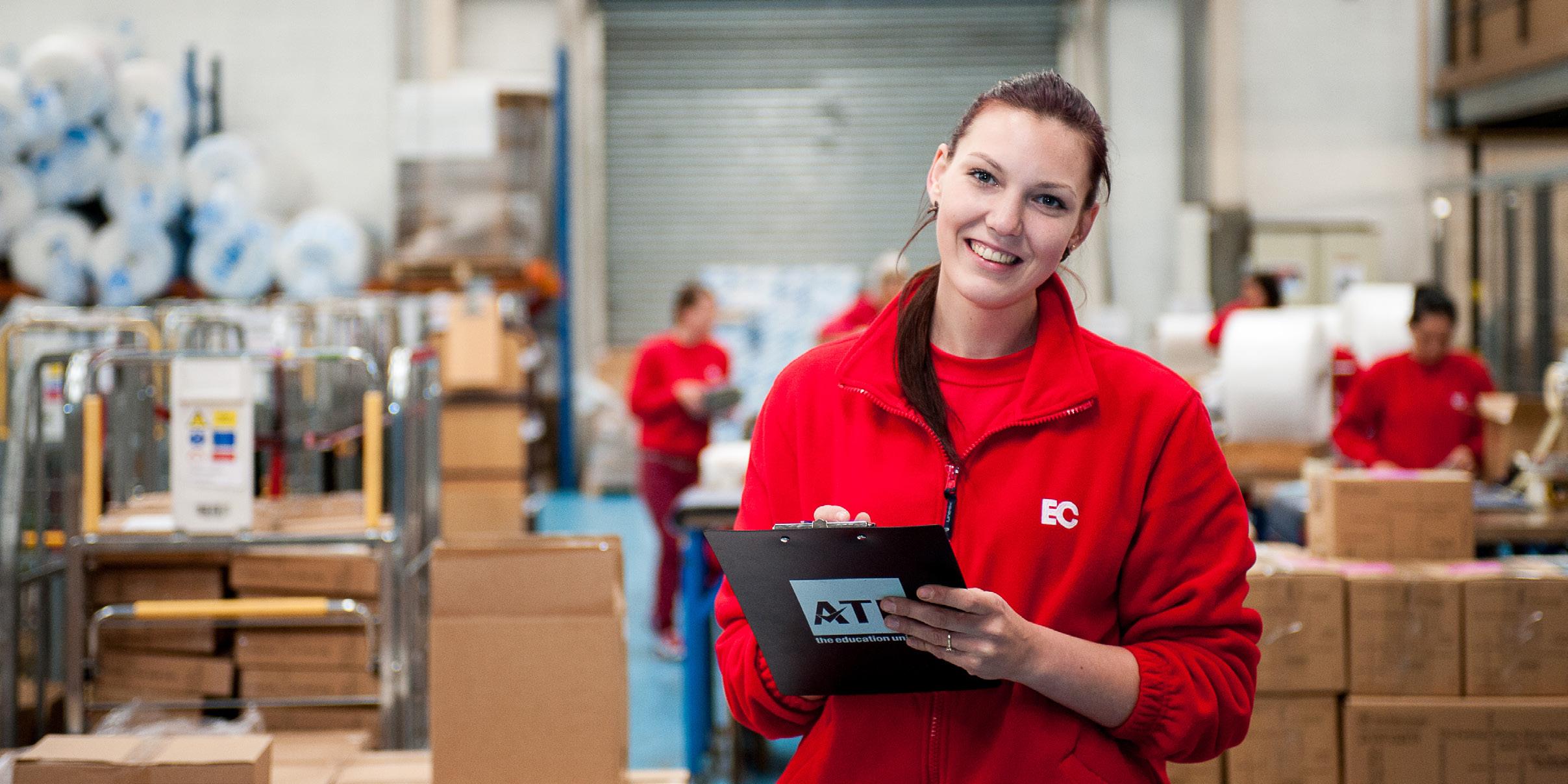
Grow your business internationally.
FedEx Cross Border can help retailers expand their horizons and reach customers globally.
Our flexible e-commerce solutions are designed to make international e-commerce available to businesses of all sizes, whilst helping to provide a localised consumer experience.

Unexpected delivery costs are the cause behind many abandoned shopping carts. Our delivery solutions can help you reduce costs and encourage your customers to complete their orders.
Our strong relationships with global final-mile delivery providers allow consumers to receive a familiar delivery experience.
During the checkout process, consumers are increasingly expecting an estimated delivery date.
FedEx Cross Border helps you make your customers aware of when their package is arriving.

When selected, our tracked service option provides visibility throughout a parcel’s journey in the recipient’s local language, where available.
Retailers will have to adapt to this tech-driven autonomous delivery trend to stay competitive and meet the modern consumer’s delivery expectations.
Contributor: Devin Partida,
 Editor-in-Chief, ReHack.com
Editor-in-Chief, ReHack.com
These 3 top Technologies like artificial intelligence (AI), machine learning (ML), computer vision (CV), and light detection and ranging (lidar) are evolving and improving autonomous machines’ capabilities. Major tech companies worldwide are experimenting with advanced technologies to pursue the goal of building an autonomous future.
What does the future look like for the autonomous delivery market? What key players are making the biggest impact? Continue reading to learn more about the development of autonomous delivery technologies and how it impacts the retail sector.
Within the decade, it’s expected that the logistics and shipping industries will undergo a massive technological transformation as companies prioritise autonomous delivery.
Delivery services have always played a vital role in the retail industry, particularly during the COVID-19 pandemic. With the continued popularity of ecommerce, demand for autonomous delivery services is expected to grow.
According to a Research and Markets report, the global autonomous last-mile delivery market will reach £49.46 billion by 2027 with a 27.7% CAGR.
Some major players in the autonomous delivery market include:
• Starship Technologies
• Amazon
• Nuro
• Einride
• Eliport
• TeleRetail
Plenty of other companies are active in the autonomous delivery space, leading to rapid growth in the industry. Autonomous delivery technologies are expected to take over last-mile delivery routes to bring products right to customers’ doorsteps.
For example, Amazon’s Scout, a sixwheeled autonomous delivery robot (ADR), is already being tested across various parts of the United States. Another company on the list, Starship Technologies, announced that the U.K. is the first country to host trials for its selfdriving delivery robots. The tests start in Greenwich, London, and illustrate the U.K. government’s commitment to bringing ADRs to the market.
Popular British grocer Ocado recently invested £10 million ($13.6 million) in tech startup Wayve to work on making autonomous grocery deliveries a reality.
would be challenging for the U.K. retail sector to ignore the fact that ADRs may be commonplace in their operations.
It
“It’s expected that the logistics and shipping industries will undergo a massive technological transformation as companies prioritise autonomous delivery.”
For example, retailers will likely have to adopt modern telecommunications devices to improve communication between thirdparty vendors completing these deliveries. Telecom companies, automakers, tech giants, and urban planners would all play integral roles in creating a truly autonomous delivery environment in the future.
According to a report from ParcelHero, more than half of Brits believe that same-day deliveries are important when shopping online and 62% expect next-day delivery options. The good news for the retail sector? Some 64% of U.K. shoppers said they’d be willing to pay for a same-day delivery service and 61% said they would wait longer if deliveries were greener or more sustainable.
This significant transformation in U.K. consumer expectations may prove difficult for small retailers lacking resources and
distribution centres across the country. The global supply chain was negatively impacted by the COVID-19 pandemic, driver shortages, and other disruptions, forcing retailers to bolster their ecommerce presence to stay afloat.
Retailers should expect shifts in trends when it comes to delivery services. Tech company StreetDrone says driverless delivery vans could even operate on U.K. streets by next year. Trials are expected to run with the Oxford City Council.

Retailers will have to adapt to this techdriven autonomous delivery trend to stay competitive and meet the modern consumer’s delivery expectations.
Expect an autonomous future in delivery services
Consumers are ordering more and more products online, from essential goods to electronics and everything in between.
Things move fast in the shipping, logistics, and delivery industries, which requires retailers to be agile, flexible, and willing to work with third parties.
While ADRs are still in their early stages, it will be fascinating to see how they impact the U.K. retail sector and other industries worldwide.



























From video streaming and gaming to flowers and apparel, the average household in the UK now spends more than £50 a month on subscription services. And, with marketplaces starting to offer same- or next-day delivery as-a-service, it’s highly likely this could top £100 in the near future.
The rise of marketplaces such as Amazon and Zalando has completely changed our perception of online shopping. We want the largest product range, the best service, the most competitive prices and the fastest delivery – all within just a few clicks.
While regular online stores try to capture customers with a unique brand experience or a niche product range, convenience is the magic word for marketplaces. Consumers can choose from countless products, additional services and, if desired, have their order on their doorstep in just a few hours.
Not surprisingly, recent research shows that 91% of UK consumers shop through marketplaces, as they find them the most
convenient and easiest way to shop.
You don’t have to be a genius to explain this massive popularity: marketplaces are simply extremely good at fulfilling consumers’ expectations. ‘You ask, we serve’ seems to be the motto, and there is one thing in particular marketplaces seem to master extremely well: delivery.
While consumers are increasingly willing to pay less and less for delivery, at the same time they are becoming more demanding than ever. Consumers want to decide for themselves where, when and how an order is delivered.
Almost three quarters (71%) of consumers say flexibility in delivery is key for them) Consumers are ruthless and will ditch their digital shopping cart if online stores fail in meeting this requirement.
Our research backs this up, with 68% of consumers claiming they abandon a
shopping cart when shipping costs are too high. Another 44% do so when the delivery time is too long.
To win over the hearts and minds of customers, online businesses need to offer both flexible and affordable delivery. Online marketplaces such as Asos and Next have understood this, and may well have found a solution in the form of shipping subscription services. However, as Asos recently found out, consumers are even starting to get annoyed at minimum spend requirements.
In exchange for a fixed annual fee, consumers get a year of free delivery as well as premium shipping options such as same-day delivery and access to special discounts. In this way, marketplaces respond to the demand for flexible and affordable delivery, and at the same time, manage to retain customers in the longterm.
In 2005, Amazon was the first marketplace to offer a shipping subscription with
“Shipping subscriptions are not only a good way to meet the high delivery demands of consumers, but are also a clever strategy to engage consumers in the long run.”
Amazon Prime. Offering customers unlimited free express delivery, on op of access to a streaming service and gaming plan all for less than ten pounds a month has become one of the ecommerce giant’s most popular services.
But Amazon is not the only one doing this anymore, and more and more large marketplaces are starting to provide their own delivery plans. A smart move, since shipping subscriptions are not only a good way to meet the high delivery demands of consumers, but are also a clever strategy to engage consumers in the long run.
After all, once you have a shipping subscription, it pays to order as much as possible from the marketplace in question –ultimately, you want to get the most out of your subscription.
While marketplaces have taken the delivery experience for consumers to the next level, it hasn’t all been sunshine and roses.
Although very successful in their own right, the services provided by the likes of Amazon, Walmart and other online marketplaces have seen consumer delivery expectations skyrocket. Many consumers wish, or even expect, that their order will arrive within 24 hours, if not the same day.
These shipping subscriptions have also raised the bar for retailers and third-party
sellers. In order to win over consumers, they too will have to live up to the superior delivery experience that marketplaces now offer, including flexible, faster, and cheaper delivery options as well as a multiple choice of carriers.

And that’s no easy task. Whereas the Amazons of this world have enormous warehouses, even bigger budgets and established relationships with parcel delivery companies, the average third-party seller has to work with a lot less.
Consumers don’t care what happens behind the scenes. All they want is the best delivery experience, no matter how big or small the online store is.
For this reason, an excellent delivery rating is key to ranking higher up on marketplaces.
A whopping 43% of consumers identify delivery as the main reason for shopping at marketplaces, which is why marketplaces are doing everything in their power to keep this reputation. Therefore, they often set high requirements for the delivery service of third-party sellers. Sellers who do not meet these requirements get a lower delivery score and will therefore never achieve the coveted top position on a product page.
The exact shipping requirements vary from one marketplace to the next. Zalando works
with DHL and DPD, while Asos prefers shipping with Evri and Royal Mail. But it goes further than just offering the desired delivery service.
Amazon, for example, bases the delivery score of sellers on three elements: the valid tracking rate, on-time delivery score and seller initiated cancellation score. Or, in simple terms: Amazon monitors the extent to which sellers share the right tracking info, deliver on time and whether orders are correctly processed.
All in all, shipping via marketplaces can quickly become very tricky. While thirdparty sellers might look into various fulfilment options, a multi-carrier strategy is probably the only way to live up to the technical requirements and satisfy customers at the same time. By combining multiple carriers, sellers are able to offer a mix of shipping options and save costs at the same time – a win-win scenario.
What this means is that selling on marketplaces actually starts at the end of the customer journey. If your shipping strategy is not in order, it’s unlikely you will ever appear at the top of a product page, meaning you can forget about sales flying through the virtual door.
Rob van den Heuvel, CEO at Sendcloud
for regular content to help you grow your retail business!
Thanks for reading. For more retail advice & inspiration, visit modernretail.co.uk